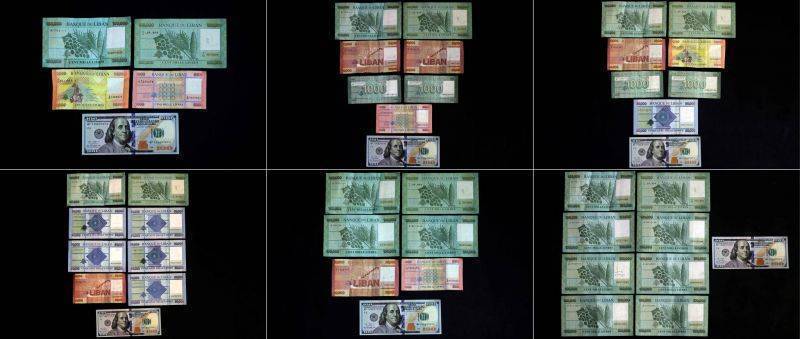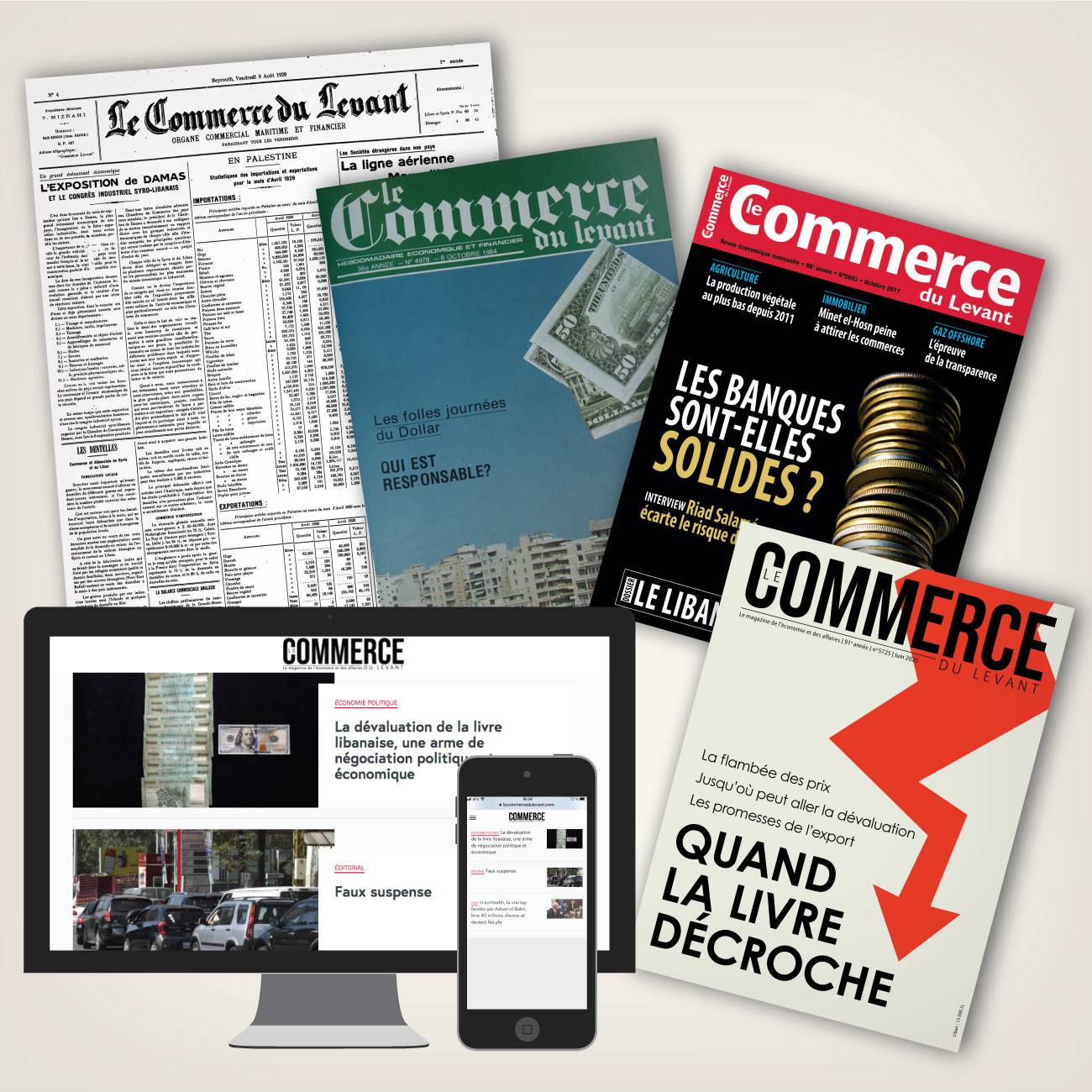Since the beginning of the summer of 2020, the Lebanese pound seems to have reached a relatively stable level against the US dollar, leading some to think that the national currency may gradually recover. But if the country does not make rapid changes, the pound may instead experience an accelerated fall, with serious social consequences.

What should the exchange rate of the pound against the dollar be today? The answer is very difficult, as it depends on the context and the method used (matching incoming and outgoing capital flows; competitiveness, high cost of living and real effective exchange rate; market expectations, confidence in the economy and in the soundness of the banking sector).
Let us adopt, for example, a "static" method, based on a principle similar to currency boards (set up in many countries with balance of payments problems and experiencing crises of confidence such as Lebanon) and consisting of the idea that to guarantee the exchange rate of the pound, the Central Bank should have dollar reserves corresponding to each pound in circulation and each dollar deposited in Lebanon.
This last point is essential, because if the dollars deposited in Lebanese banks do not have coverage (in these banks, in their corresponding banks or in the Central Bank), they risk not being reimbursable. The banking sector and the Banque du Liban (BDL) may then be forced to con-vert the deposits to Lebanese pounds and pay the deposits in the national currency. This would give rise to a wide debate between those who say that such a maneuver is legitimate under the law and those who say it is not.
The total deposits in Lebanese banks, in dollars and pounds (at the exchange rate of 1,500 pounds for one dollar), amount today to about $150 billion. On the other hand, the total re-serves in foreign currencies at the central bank are estimated at about $20 billion.
Thus, if one adopts a "static" method (ignoring for the moment the real incoming and outgoing financial flows) and assumes that all depositors immediately show up to demand their deposits (which is consistent with the current case of panic on the Lebanese market), it becomes obvious that the authorities may not pay the deposits back and may have to convert these assets into pounds (which, in practice, is done today, since banks allow depositors to withdraw their dollar deposits in pounds, but only in small amounts and with a strict ceiling).
If all deposits were to be paid at once in dollars, the BDL would in practice be forced to convert all such deposits to pounds (at an exchange rate of 1,500 pounds to the dollar) and then cede to the depositors all the "fresh" dollars it has in reserve against those pounds.
The equilibrium exchange rate would then be 11,250 pounds to the dollar (150 billion multi-plied by 1,500 pounds to the dollar then divided by 20 billion).This rate is entirely theoretical. If the Central Bank were to hold, for example, half of its reserves to meet the immediate needs of the population (electricity, gasoline, diesel, pharmaceuticals, flour and food) for two to three years, there would only be 10 billion available, and the equilibrium exchange rate would then be 22,500 pounds to the dollar, or even much more, depending on the level of foreign currencies actually available.
In reality, at this point, numbers do not matter anymore; the main concern is to know that if things continue as they are, the pound would only take a downtrend. The mere fact that the governor of the Central Bank mentions a lifting (total or partial) of subsidies on basic necessities by the end of the year may provoke early purchases of dollars, and thus induce – unintentionally – a fall in the national currency.
Meanwhile, the volatility of the exchange rate, with daily fluctuations of up to 500 or 1,000 pounds, and sometimes even more, is just another sign of the fragility of the situation.
The bet on regional peace
In reality, few countries have experienced a situation as complex as that of Lebanon, which engaged from the mid-1990s in a policy of massive indebtedness, building its economic survival on a bet on regional peace, which proved to be erroneous. Lebanon therefore had to set up a perilous debt mechanism, which consisted in constantly postponing maturities in order to avoid declaring bankruptcy outright.
This policy was subject to the incessant uncertainties of economic and financial fluctuations. This is why it had to rely on external guarantees, implicit or explicit, such as that of Saudi Arabia and Gulf states, as well as that of the international community, symbolized by the Paris I, II and III conferences, to prevent the collapse of the country.
Thus, the Lebanese system did not really correspond to a Ponzi pyramid (as we often hear). As a matter of principle, the latter is based on no other guarantee than the continuous influx of new deposits to replace the old ones already spent, whereas Lebanon, for its part, relied on a number of external guarantees (in other words, on the existence of a lender of last resort, whose presence was felt whenever necessary).
If the Lebanese system, a symbol of mismanagement and clientelism, is indefensible, it is these external guarantees that it lacks today, as the international community refuses to continue to unconditionally support this system in its current form and calls for radical reforms.
Left to itself and deprived of support, the "Lebanese miracle" thus collapsed.
Worse still, the accumulation of deficits and debts, combined with the drying up of external financial flows and the absence of any credible alternative (given the weakness of local production and exports), places the country today in a very unfavorable position, and in a "logic of liquidating" the entire economic and financial system (the BDL, private banks, the state).
It is very difficult, in such a context, to estimate the exact value of the assets held by these various public and private entities (physical assets and real estate, receivable on the economy), since the country, deprived of refinancing and credit, is now almost at a standstill (for example, the value of assets in bank cheques or "Lebanese dollars" is very different from that of their equivalent in "fresh dollars").
Three scenarios
From this observation, three scenarios emerge, on which the fate of the Lebanese pound depends closely.
The first, pessimistic, consists of a rapid economic, financial, social and political collapse, could lead to troubles and insecurity.
The second, less dramatic but also negative, would be to continue the current policy of liquidation of debts and insolvent bank deposits through their "lirification;" in other words the printing of Lebanese pounds to "artificially" repay deposits in dollars (at the current rate of 3,900 pounds per dollar, or even 1,500 above a certain threshold and within certain limits). This would result in a massive injection of national currency into the country, thus accelerating the "race to the abyss" of the pound on the black market. While the "humanitarian" aid promised to Lebanon, especially since the explosion at the Port of Beirut on August 4, 2020, estimated at $300 million, would only be a drop in the bucket vis-à-vis the scale of the economic crisis that has hit the country over the past year. The only positive outcome of this scenario would be that the de-valuation of the pound would lead to a rapid recovery of Lebanon's price competitiveness of Lebanon (where prices and costs had previously become too high), with a strong rebound in exports and tour-ism and a resumption of capital repatriation, combined with a decline in imports. This would allow for the rebalancing of inward and outward financial flows.
Read also: The Haircut Phobia
But this would require a number of conditions (stabilization of the social situation and maintenance of social safety nets, security pacification and an end to urban clashes, restoration of confidence in the banking sector and resumption of foreign trade financing, rebalancing of public finances, resumption of electricity supply). Such conditions seem now out of reach in the absence of external aid.
Finally, the third, more optimistic scenario, is based on a political settlement as well as the effective implementation of a comprehensive reform plan demanded by the international donor community. Capital inflows from the International Monetary Fund (IMF), the Conference for Economic Development through Reforms and with Enterprises (CEDRE), as well as private capital and, potentially, the sale of government-owned gold would thus raise between $25 billion and $40 billion. This, together with a debt restructuring and rescheduling plan, would lead to the restoration of confidence and the gradual recovery of the economy.
Read also: Early Elections: Trap or Opportunity for Change?
The exchange rate of the pound may then stabilize around a level that restores the country's price competitiveness while remaining sustainable for the population (for example, between 4,000 and 5,000 pounds per dollar). But for this to happen, it is to be hoped that the resolution of the Lebanese crisis does not go on forever, causing mass emigration and socio-economic damage that is difficult to repair quickly.
* Fouad Khoury Helou is an economist and author of "Mondialisation : la mort d’une utopie," pub-lished in 2017 by Calmann-Lévy.







